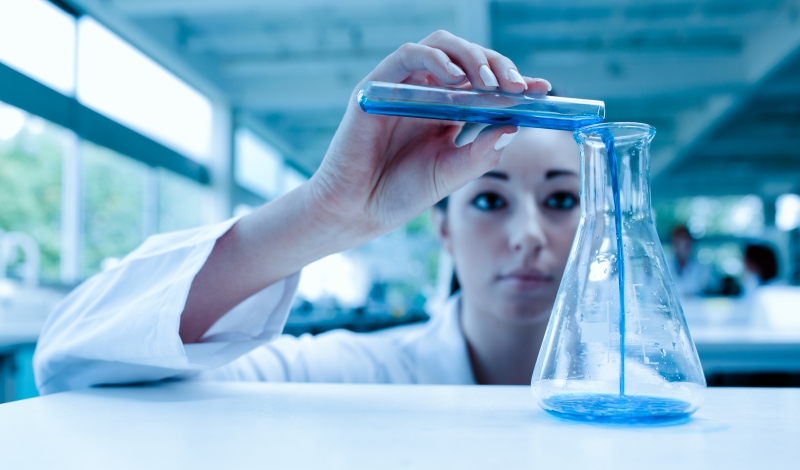The scientific method
 The scientific method is a procedure used to yield answers to certain questions:Firstly, a question needs to be asked—this has to be meaningful, at the very least, it needs to make grammatical sense. It is based on an observation, such as the difficulty of breathing at altitude, for example, and why that is, or it can be something much broader, such as cancer causes suffering… is there a cure for cancer? How a question is defined, however, determines how effective the application of the scientific method is likely to be; in other words, some questions are more scientific than others.Secondly, conjecture—a hypothesis is formed based on previous scientific knowledge. An answer is suggested, intuitively and then expressed deductively; this means that a singular statement is derived, using logic, from a more general one. For example—all men are mortal, Socrates is a man, therefore Socrates is mortal. There are two important criteria for the hypothesis to be valid—that it can be tested through experimentation, and that it can be falsifiable. If a hypothesis is presented in such a way that is too vague, or open-ended, to disprove, it cannot lend itself to the scientific method, and is sometimes referred to as a pseudo-statement. Metaphysics and theology rely heavily on pseudo-statements and are sometimes referred to as pseudo-sciences, by scientists, for that reason.Thirdly, experimentation—the hypothesis needs to be tested. Once again, there is no exact predetermined method of doing this, it can be conducted in a lab, a kitchen table or in a field. Two variables need to be tested, the independent variable and the dependent variable. For example, an experiment might involve altering the aerodynamic design of a car to see how this improves fuel efficiency. The aerodynamic design would be the independent variable because this is what is actively being altered. The fuel efficiency would be the dependent variable, as it depends on each aerodynamic design of the car. It is important that every other factor remains identical (as is feasible) i.e., only the aerodynamic of the car is altered, the engine, the fuel, the wheels, the track and so on must remain the same. A control is also important to strengthen the reliability of the results, in this case, each experiment needs to be duplicated with a car of identical properties (except for the body shape, which is fixed) to make sure nothing irregular is happening that might have skewed the results.Finally, evidence—an experimenter can gather both quantitative (observable but not measurable e.g. smell, taste) and qualitative (measurable in numerical terms e.g. distance, volume) data from the experiment which is analysed in such a way that a conclusion can be made that either supports the hypothesis, or refutes it. Even though a conclusion may be found, others may still question any, or all, of the procedure that yielded the conclusion (the answer to the original question). If the conclusion is accepted then the hypothesis remains justified (unless it is later falsified).
The scientific method is a procedure used to yield answers to certain questions:Firstly, a question needs to be asked—this has to be meaningful, at the very least, it needs to make grammatical sense. It is based on an observation, such as the difficulty of breathing at altitude, for example, and why that is, or it can be something much broader, such as cancer causes suffering… is there a cure for cancer? How a question is defined, however, determines how effective the application of the scientific method is likely to be; in other words, some questions are more scientific than others.Secondly, conjecture—a hypothesis is formed based on previous scientific knowledge. An answer is suggested, intuitively and then expressed deductively; this means that a singular statement is derived, using logic, from a more general one. For example—all men are mortal, Socrates is a man, therefore Socrates is mortal. There are two important criteria for the hypothesis to be valid—that it can be tested through experimentation, and that it can be falsifiable. If a hypothesis is presented in such a way that is too vague, or open-ended, to disprove, it cannot lend itself to the scientific method, and is sometimes referred to as a pseudo-statement. Metaphysics and theology rely heavily on pseudo-statements and are sometimes referred to as pseudo-sciences, by scientists, for that reason.Thirdly, experimentation—the hypothesis needs to be tested. Once again, there is no exact predetermined method of doing this, it can be conducted in a lab, a kitchen table or in a field. Two variables need to be tested, the independent variable and the dependent variable. For example, an experiment might involve altering the aerodynamic design of a car to see how this improves fuel efficiency. The aerodynamic design would be the independent variable because this is what is actively being altered. The fuel efficiency would be the dependent variable, as it depends on each aerodynamic design of the car. It is important that every other factor remains identical (as is feasible) i.e., only the aerodynamic of the car is altered, the engine, the fuel, the wheels, the track and so on must remain the same. A control is also important to strengthen the reliability of the results, in this case, each experiment needs to be duplicated with a car of identical properties (except for the body shape, which is fixed) to make sure nothing irregular is happening that might have skewed the results.Finally, evidence—an experimenter can gather both quantitative (observable but not measurable e.g. smell, taste) and qualitative (measurable in numerical terms e.g. distance, volume) data from the experiment which is analysed in such a way that a conclusion can be made that either supports the hypothesis, or refutes it. Even though a conclusion may be found, others may still question any, or all, of the procedure that yielded the conclusion (the answer to the original question). If the conclusion is accepted then the hypothesis remains justified (unless it is later falsified).
